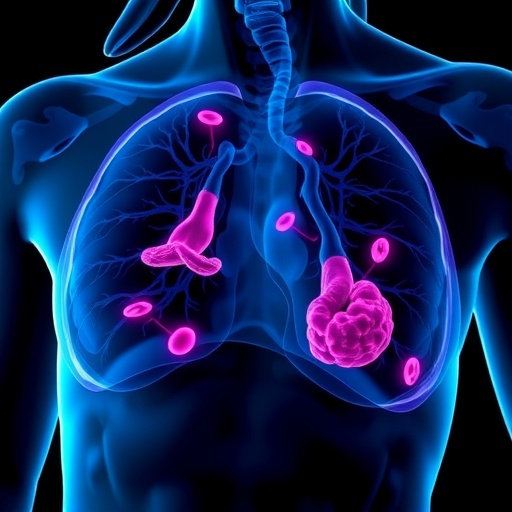A team of researchers from the NIHR Leicester Biomedical Research Centre – a partnership between Leicester's Hospitals, the University of Leicester and Loughborough University – has identified biological variations in lung tissue samples that for the first time can help identify people with mild asthma from those with moderate or severe asthma.
The team led by Professors Salman Siddiqui and Peter Bradding used state-of-the-art statistical methods involving visualisation approaches, to perform the largest comprehensive analysis of common pathological features in the airways of people with asthma of different severities. They also investigated the clinical features of these subtypes and whether there is any association with changes in genes and decline in lung function.
Professor Siddiqui and his team identified multiple biological 'micro-clusters' which means that there are different combinations of active genes in each of the reported subtypes of asthma.
Professor Bradding, who is a Professor of Respiratory Medicine at the University of Leicester and Consultant Respiratory Physician at Leicester's Hospitals, said: "The most exciting thing about finding these biological variations underpinning the differences between mild asthma and moderate and severe asthma is that the statistical methods if further developed could lead to the development of new, targeted treatments for subtypes of asthma, thus allowing the right asthma treatments to be matched to different patients. In this scenario, patients would benefit because they would be offered more personalised, and therefore more effective, care to manage their asthma."
Professor Siddiqui, Professor of Airway Diseases at the University of Leicester and Consultant Respiratory Physician at Leicester's Hospitals, added: "Further research is now underway to understand how to use these statistical approaches to combine complex information in asthma patients and make personalised treatment decisions."
Dr Samantha Walker, Director of Research and Policy at Asthma UK, which funded the study, said: "For a long time, asthma has been considered as one condition, but this research illustrates the growing understanding that the term 'asthma' is in fact an umbrella term for different lung conditions. There needs to be a much better understanding of how to identify different types of asthma so that treatment can be tailored to prevent asthma attacks and keep people out of hospital. We are calling for more research into asthma, particularly into improving and developing diagnostic tools so that people can be diagnosed and treated quickly and effectively."
###
This research was supported by Ayasdi machine intelligence, a software platform that supports topological data analysis of high dimensional data.
The research appears in an article, "Airway Pathological Heterogeneity in Asthma: Visualisation of Disease Micro-Clusters using Topological Data Analysis", was published in the Journal of Allergy and Clinical Immunology. For the full article: http:http://www.jacionline.org/article/S0091-6749(18)30039-3/fulltext
Media Contact
Rachael Dowling
[email protected]
44-116-258-4971
@UoLNewsCentre
http://www.leicester.ac.uk
http://dx.doi.org/10.1016/j.jaci.2017.12.982




